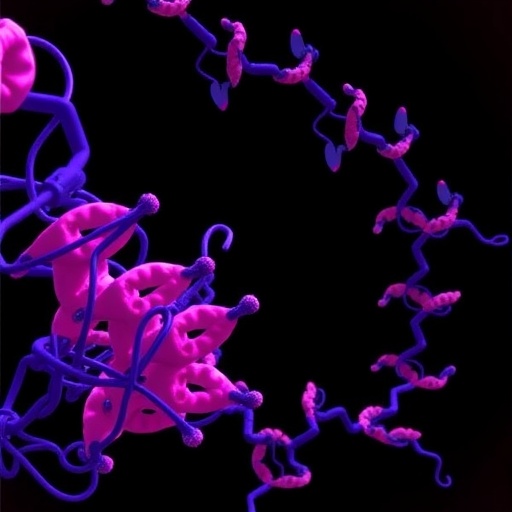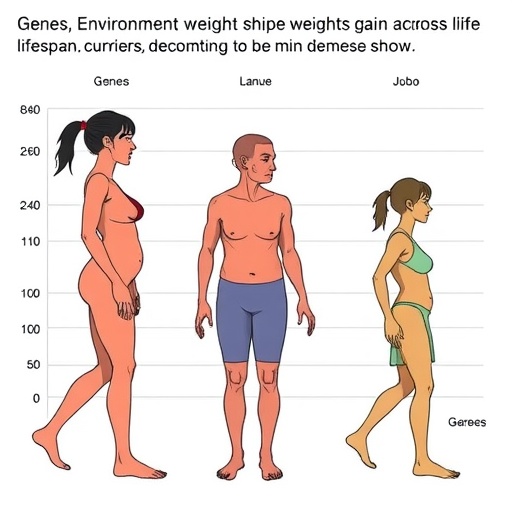In a groundbreaking update to our understanding of estrogen receptor biology, a recent correction published in Cell Research challenges long-held assumptions about the G protein-coupled receptor 30 (GPR30), also known as GPER1. Contrary to prior hypotheses that positioned GPR30 as a direct estrogen receptor mediating rapid cellular responses to estrogen, the work by Liu et al. now provides compelling structural and functional evidence indicating that GPR30 does not directly bind estrogen. This revelation carries profound implications for endocrinology, pharmacology, and therapeutic strategies targeting estrogen-related pathways.
For decades, estrogen signaling has been understood primarily through the nuclear estrogen receptors ERα and ERβ, which regulate gene transcription upon ligand binding. However, accumulating evidence since the early 2000s hinted at non-genomic, rapid signaling events upon estrogen stimulation—effects that couldn’t be fully explained by classical receptors alone. GPR30 entered the spotlight as a candidate receptor mediating these non-genomic effects due to its seven-transmembrane GPCR structure, its expression in estrogen-sensitive tissues, and early reports of estrogen binding and activation.
The recent correction clarifies and redefines this narrative by scrutinizing the molecular interactions between estrogen and GPR30 through a combination of advanced structural biology techniques and rigorous functional assays. High-resolution cryo-electron microscopy and X-ray crystallography offered detailed views of GPR30’s ligand-binding domain, revealing an absence of a canonical estrogen-binding pocket. This structural insight critically undermines the long-held assertion that GPR30 serves as a direct receptor for estrogen.
Functionally, the study deployed a suite of sophisticated cell-based assays to assess GPR30 activation in the presence of various estrogenic compounds. Remarkably, results consistently demonstrated that GPR30 fails to exhibit estrogen-dependent conformational changes or downstream signaling typical of a classical receptor-ligand interaction. Instead, GPR30 appears responsive to other endogenous or exogenous ligands, suggesting a more nuanced role in cellular signaling networks that may be indirectly modulated by estrogen levels but not directly triggered by estrogen binding itself.
This reevaluation stems from rigorous protein-ligand interaction studies utilizing biophysical methods such as surface plasmon resonance (SPR) and isothermal titration calorimetry (ITC), which failed to detect binding affinities typical of authentic estrogen receptors. Moreover, mutagenesis experiments targeting residues predicted to confer estrogen affinity did not alter receptor responsiveness, further discrediting the hypothesis of direct estrogen-GPR30 binding.
The study also highlights methodological challenges inherent in receptor identification and functional validation. Past studies may have conflated indirect receptor activation or downstream effects with true ligand binding, underscoring the need for multifaceted approaches combining structural, biochemical, and cellular techniques. This rigor helps prevent mischaracterization that could mislead drug discovery and therapeutic targeting strategies.
From an evolutionary perspective, the dissociation of GPR30’s function from direct estrogen binding invites fresh inquiry into the receptor’s physiological roles. Instead of acting as an estrogen receptor, GPR30 might serve as a sensor or mediator in parallel signaling cascades influenced by the cellular context, hormonal milieu, or interaction with other membrane-bound proteins.
These insights also prompt a reconsideration of rapid estrogen signaling phenomena broadly attributed to membrane receptors. Alternative mechanisms, including modulation of ion channels, interaction with other GPCRs, or involvement of membrane-associated adaptor proteins, may drive these effects rather than a direct GPCR-mediated estrogen response. Future research must therefore expand to map these molecular pathways with greater precision.
At the cellular level, the distinction between direct receptor-ligand interaction and indirect signaling modulation has significant consequences for understanding tissue-specific estrogen responses. Differential expression patterns, receptor crosstalk, and local ligand availability all influence the net physiological outcome, and clarity about GPR30’s role sharpens our capacity to dissect these complex networks.
Notably, this work underscores the dynamic and sometimes contentious nature of scientific progress. Initial reports highlighting GPR30 as an estrogen receptor stimulated a surge of research and therapeutic innovation. However, science demands iterative validation, and corrections such as this preserve the integrity of the field by refining hypotheses and informing evidence-based practice.
The correction from Liu and colleagues represents a crucial recalibration in the receptor signaling paradigm. While GPR30 remains an important biomolecule with roles in cellular physiology, its identity as a direct estrogen receptor must be reconsidered in light of these robust structural and functional findings. Researchers and clinicians alike must incorporate this new understanding to guide future investigations and clinical interventions.
In addition to redefining GPR30’s biochemical properties, the study also opens new avenues for exploring orphan GPCR functions and their ligands. The methodology employed—combining structural biology with comprehensive functional assays—sets a new standard for receptor characterization moving forward.
The evolving landscape of estrogen signaling thus becomes more intricate and layered. Classical receptors retain their central roles in gene regulation, while GPR30 emerges as an indirect player within broader cellular signaling frameworks. This nuanced view better reflects biological complexity and guides more targeted research that can translate into precision medicine.
This landmark correction serves as a call to the scientific community to uphold rigorous standards in receptor deorphanization and functional validation. As endocrine research continues to unravel the molecular intricacies of hormone action, such clarity is paramount to avoid conflations that hinder translational progress.
In conclusion, this pivotal reassessment of GPR30 challenges entrenched dogmas and exemplifies the evolving nature of scientific understanding. By disentangling GPR30 from being a direct estrogen receptor, the study refocuses attention on alternative mechanisms of rapid estrogen action and calls for renewed efforts to map receptor signaling landscapes with precision and accuracy.
Subject of Research: Estrogen receptor signaling and GPR30 receptor characterization
Article Title: Author Correction: Structural and functional evidence that GPR30 is not a direct estrogen receptor
Article References:
Liu, H., Guo, S., Dai, A. et al. Author Correction: Structural and functional evidence that GPR30 is not a direct estrogen receptor.
Cell Res (2025). https://doi.org/10.1038/s41422-025-01113-8
Image Credits: AI Generated
Tags: advanced structural biology techniquescryo-electron microscopy in researchestrogen receptor correctionestrogen-related therapeutic strategiesestrogen-sensitive tissuesG protein-coupled receptor 30GPR30 receptor biologyimplications for endocrinology and pharmacologymolecular interactions with estrogennon-genomic estrogen signalingreevaluating estrogen receptor assumptionsstructural and functional evidence





